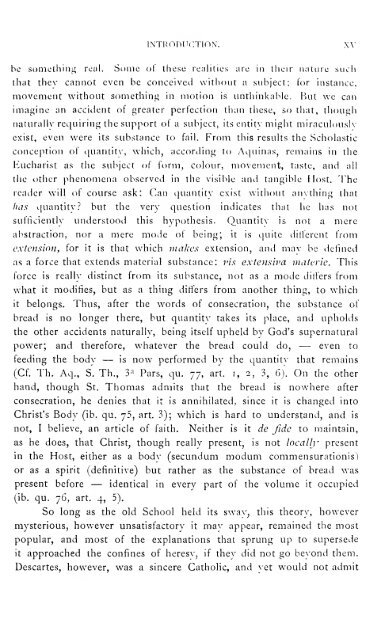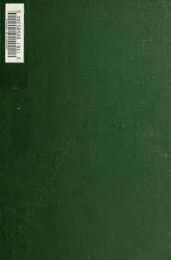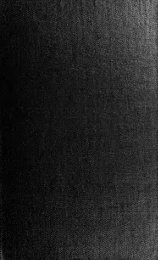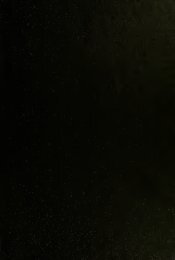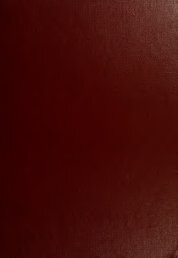Create successful ePaper yourself
Turn your PDF publications into a flip-book with our unique Google optimized e-Paper software.
e something<br />
INTRODUCTION. XV<br />
real. Some of these realities are in their nature such<br />
that thev cannot even be conceived without a subject; for<br />
instance,<br />
movement without something in motion is unthinkable. But we can<br />
imagine an acci<strong>de</strong>nt of greater perfection than these, so that, though<br />
naturally requiring the support of a subject, its entity might miraculously<br />
exist, even were its substance to fail. From this results the Scholastic<br />
conception of quantity, which, according to Aquinas,<br />
remains in the<br />
buicharist as the subject of form, colour, movement, taste, and all<br />
the other phenomena observed in the visible and tangible Host. The<br />
rea<strong>de</strong>r will of course ask: Can quantity exist without anything that<br />
has quantity? but the very question indicates that he has not<br />
sufficiently un<strong>de</strong>rstood this hypothesis. Quantity is not a mere<br />
abstraction, nor a mere mo<strong>de</strong> of being; it is quite different from<br />
extension, for it is that which makes extension, and may be <strong>de</strong>fined<br />
as a force that extends material substance: vis extensiva materie. This<br />
force is really distinct from its substance, not as a mo<strong>de</strong> differs from<br />
what it modifies, but as a thing differs from another thing, to which<br />
it belongs. Thus, after the w rords of consecration, the substance of<br />
bread is no longer there, but quantity takes its place, and upholds<br />
the other acci<strong>de</strong>nts naturally, being itself upheld by God's supernatural<br />
power; and therefore, whatever the bread could do, — even to<br />
feeding the body — is now performed by the quantity that remains<br />
(Cf. Th. Aq., S. Th.,<br />
hand, though<br />
3 a<br />
Pars, qu. 77, art. 1, 2, 3, 6). On the other<br />
St. Thomas admits that the bread is nowhere after<br />
consecration, he <strong>de</strong>nies that it is annihilated, since it is changed into<br />
Christ's Body (ib. qu. j5, art. 3); which is hard to un<strong>de</strong>rstand, and is<br />
not, I believe, an article of faith. Neither is it <strong>de</strong> fi<strong>de</strong> to maintain,<br />
as he does, that Christ, though really present, is not locally present<br />
in the Host, either as a body (secundum modum commensurationis)<br />
or as a spirit (<strong>de</strong>finitive) but rather as the substance of bread was<br />
present before — i<strong>de</strong>ntical in every part of the volume it occupied<br />
(ib. qu. 76, art. 4, 5).<br />
So long as the old School held its sway, this theory, however<br />
mysterious, however unsatisfactory it may appear, remained the most<br />
popular, and most of the explanations that sprung up to superse<strong>de</strong><br />
it approached the confines of heresv, if they did not go beyond them.<br />
Descartes, however, was a sincere Catholic, and vet would not admit


